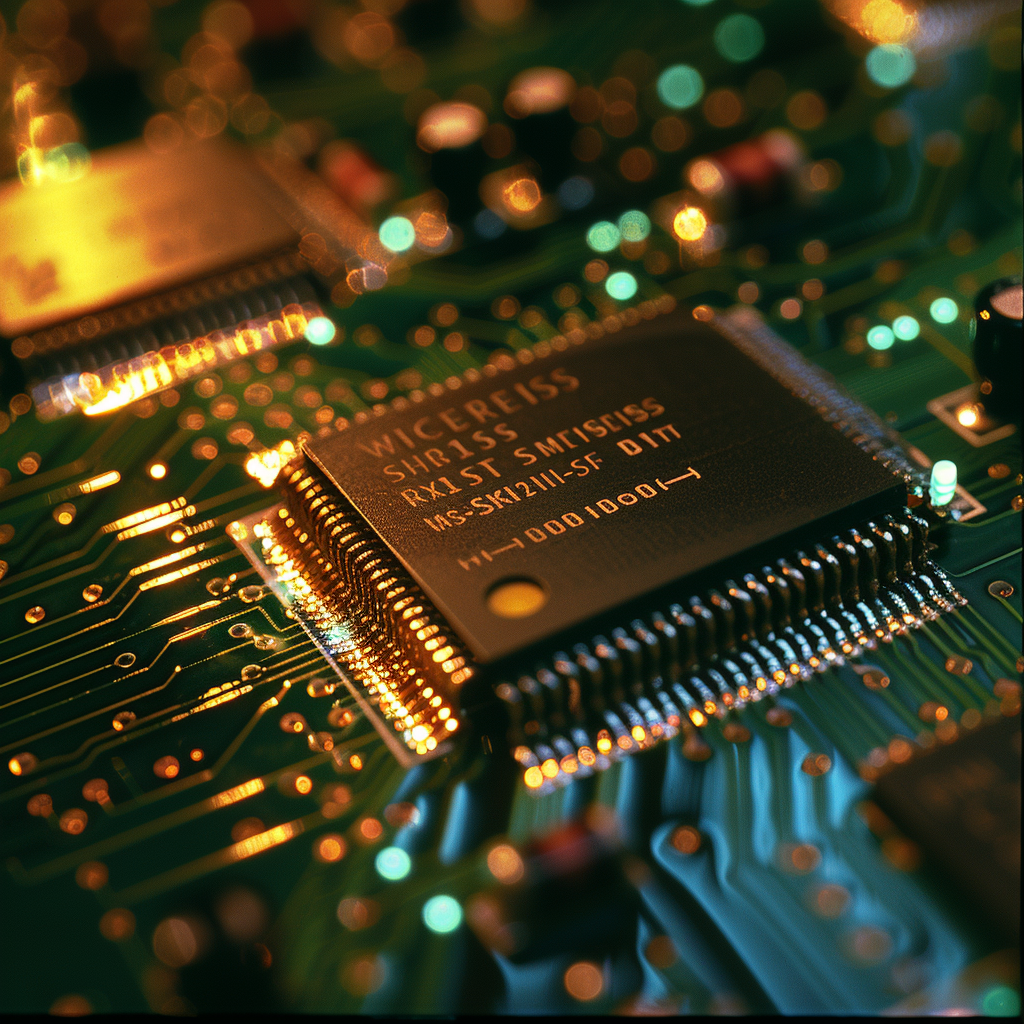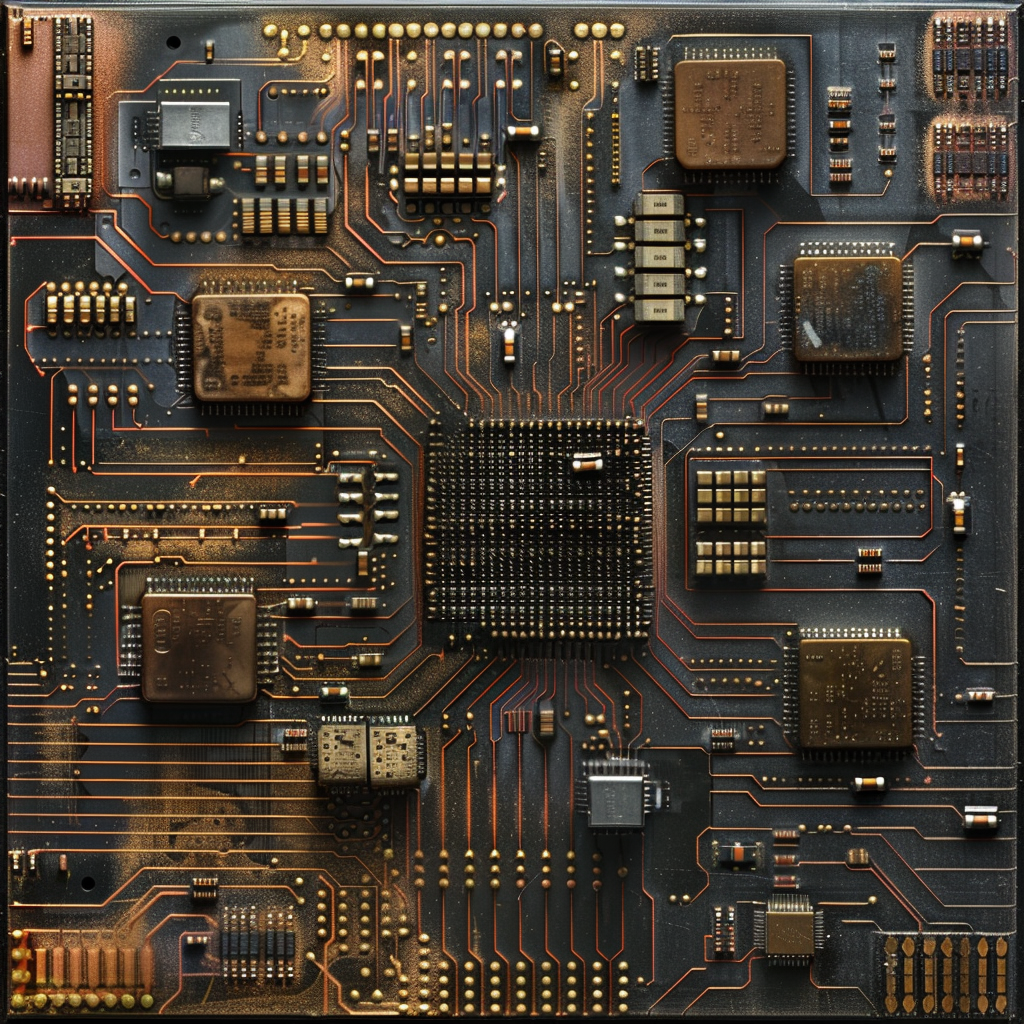Time: 2024-02-27 18:16:32View:
Microcontrollers, also known as MCUs, are integrated circuits that incorporate a microprocessor core, memory, and a variety of peripherals onto a solitary chip. Their purpose is to offer control and processing capabilities for a diverse array of embedded systems and applications. MCUs find widespread usage in devices and systems that necessitate real-time control, minimal power consumption, and a compact design.
For more information, please read this article: An Overview of Microcontroller to understand more about it.

PLC stands for Programmable Logic Controller. It is a specialized industrial computer system designed to control and automate machinery and processes in manufacturing and industrial environments. PLCs are widely used in industries such as manufacturing, automotive, oil and gas, pharmaceuticals, food processing, and many others.
The primary purpose of a PLC is to monitor inputs from sensors and other devices, execute control algorithms, and generate outputs to control actuators and other components. PLCs are programmed to perform specific tasks, such as monitoring temperature, pressure, or speed, and making decisions based on predefined logic to control machinery, production lines, or entire industrial processes.
PLCs consist of three main components: the central processing unit (CPU), input modules, and output modules. The CPU is the brain of the PLC, responsible for executing the control program, managing data, and communicating with other devices. Input modules receive signals from sensors and convert them into digital data that the PLC can process. Output modules receive control signals from the PLC and convert them into signals that can operate actuators, such as motors, valves, or relays.
PLCs offer several key advantages in industrial automation. They provide real-time control, allowing for precise and timely response to changes in the production process. PLCs are designed to operate reliably in harsh industrial environments, with resistance to dust, moisture, vibration, and temperature variations. They also offer high-speed processing capabilities, making them suitable for applications with fast and complex control requirements.
Programming PLCs involves using specialized software that allows engineers and programmers to define the control logic and behavior of the system. PLC programs are typically written in ladder logic, a graphical programming language that represents control circuits using symbols and graphical representations of relays, contacts, coils, and other components. Other programming languages, such as structured text or function block diagrams, may also be supported by specific PLC models.
PLCs are highly flexible and modular, allowing for easy expansion and modification of control systems as industrial processes evolve. They can be integrated with other automation systems, such as human-machine interfaces (HMIs), supervisory control and data acquisition (SCADA) systems, and enterprise-level systems for comprehensive control and monitoring.
Overall, PLCs play a critical role in industrial automation, enabling efficient and reliable control of machinery, enhancing productivity, improving product quality, and ensuring safety in industrial environments. Their flexibility, robustness, and ability to handle complex control tasks make them an integral part of modern manufacturing and industrial processes.
Microcontrollers (MCUs) and Programmable Logic Controllers (PLCs) are both important components in the world of automation and control systems. While they share similarities in their ability to control and monitor processes, there are significant differences between the two.
Microcontrollers are typically used in smaller-scale applications and embedded systems. They are compact, low-cost devices that integrate a microprocessor core, memory, and various peripherals on a single chip. MCUs are well-suited for applications that require real-time control, low power consumption, and compact design. They excel in tasks such as sensor interfacing, data acquisition, and simple control algorithms. MCUs are commonly found in consumer electronics, automotive systems, medical devices, and Internet of Things (IoT) devices.
On the other hand, PLCs are specialized industrial computer systems designed for controlling and automating complex machinery and processes in industrial environments. PLCs are built to withstand harsh industrial conditions and are known for their robustness and reliability. They offer features such as high-speed processing, real-time control, and extensive input/output (I/O) capabilities to handle diverse industrial control tasks. PLCs are commonly used in industries such as manufacturing, oil and gas, automotive, and food processing.
One of the key differences between MCUs and PLCs lies in their programming languages and development environments. Microcontrollers are typically programmed using low-level languages such as assembly language or C, allowing for precise control over hardware resources. PLCs, on the other hand, are often programmed using ladder logic, a graphical programming language that represents control circuits using symbols and graphical representations of relays. PLC programming also supports other languages like structured text or function block diagrams.
Another difference is in the scale and complexity of the applications they are commonly used for. Microcontrollers are suitable for small to medium-scale applications, while PLCs are designed for larger and more complex industrial control systems. PLCs offer extensive I/O capabilities, allowing for the control of numerous sensors, actuators, and devices simultaneously. They also provide features such as redundancy, fault tolerance, and advanced communication protocols to ensure reliable and efficient operation in industrial environments.
Cost is another differentiating factor. Microcontrollers are generally more cost-effective compared to PLCs. They are affordable and readily available, making them suitable for applications where cost is a significant consideration. PLCs, on the other hand, are typically more expensive due to their industrial-grade features, robustness, and specialized hardware and software.
In summary, while microcontrollers and PLCs share the goal of controlling and monitoring processes, they are designed for different scales and environments. Microcontrollers excel in small-scale embedded systems and applications requiring low power consumption, while PLCs are specifically tailored for large-scale industrial control systems with complex requirements. The choice between an MCU and a PLC depends on the specific application's needs, scale, complexity, environmental conditions, and budget considerations.

Programmable Logic Controllers (PLCs) offer several advantages and disadvantages in industrial automation and control systems. Understanding these pros and cons is crucial for making informed decisions regarding their implementation.
Advantages of PLCs:
Robustness and Reliability: PLCs are designed to operate in harsh industrial environments with resistance to dust, moisture, vibration, and temperature variations. They offer high levels of reliability, ensuring continuous operation and minimizing downtime.
Real-Time Control: PLCs provide real-time control capabilities, allowing for precise and timely response to changes in the production process. This is crucial in applications where accurate timing and synchronization are required.
Flexibility and Modular Design: PLCs are highly flexible and modular, enabling easy expansion and modification of control systems as industrial processes evolve. They can be integrated with other automation systems, such as Human-Machine Interfaces (HMIs) and Supervisory Control and Data Acquisition (SCADA) systems, for comprehensive control and monitoring.
Extensive I/O Capabilities: PLCs offer a wide range of input/output (I/O) modules, allowing for the control of diverse sensors, actuators, and devices simultaneously. This enables seamless integration with various components of the industrial system.
Programming and Maintenance: PLC programming is typically done using graphical programming languages such as ladder logic, which simplifies the programming process, especially for individuals without extensive programming backgrounds. PLCs also provide diagnostic and troubleshooting features that aid in the maintenance and debugging of control systems.
Disadvantages of PLCs:
Cost: PLCs can be more expensive compared to other control solutions, especially for small-scale applications. The cost includes not only the hardware but also the software, programming, and maintenance.
Learning Curve: Although PLC programming languages like ladder logic are relatively easy to learn, they still require training and experience to become proficient. This can be a disadvantage for individuals new to PLC programming.
Limited Processing Power: PLCs may have limited processing power compared to other computing devices such as microcontrollers or computers. This can be a limitation when dealing with complex control algorithms or large-scale systems.
Scalability: While PLCs offer modular design and expansion capabilities, there may be limitations on the scalability of certain systems. As the system complexity increases or additional I/O points are required, the capacity of the PLC may reach its limit, necessitating the use of multiple PLCs or a different control solution.
Proprietary Nature: PLCs are often proprietary systems, meaning they are manufactured by specific vendors and may require proprietary programming software and hardware. This can result in limited compatibility with other systems and potential dependence on a single vendor.
Overall, the advantages of PLCs, such as robustness, real-time control, flexibility, and extensive I/O capabilities, make them a popular choice for industrial automation. However, the cost, learning curve, limited processing power, scalability, and proprietary nature should be carefully considered when selecting a control solution for a specific application.